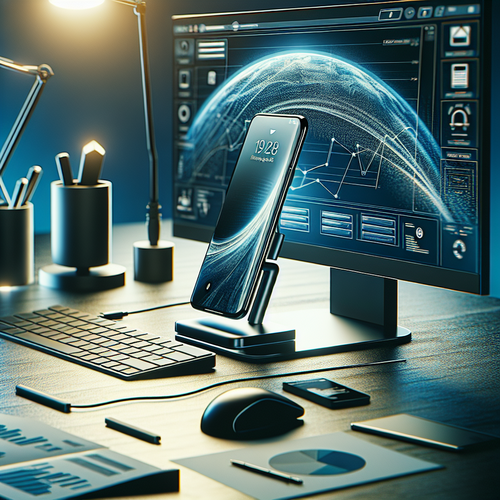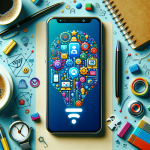
Phones Replacing Laptops: The Rise of Mobile Productivity
Phones Replacing Laptops: The Rise of Mobile Productivity
In the modern world, the boundaries between devices continue to blur, with smartphones emerging as viable alternatives to traditional laptops for many users. This transformation is propelled by advancements in technology, larger screens, and innovative accessories that enable productivity on the go. In this guide, we’ll explore how phones are becoming primary productivity tools and what features make them suitable replacements for laptops.
Prerequisites
- Familiarity with basic smartphone and laptop functionalities.
- Understanding of mobile operating systems such as iOS and Android.
- Access to productivity applications (e.g., document editors, spreadsheets, and communication tools).
Understanding the Shift
The traditional laptop has long been the go-to device for productivity tasks. However, as smartphones are equipped with increasingly powerful processors, higher resolution displays, and advanced connectivity options, they are stepping up to fill this role. The following factors contribute to this trend:
1. Enhanced Hardware Capabilities
- Powerful Processors: Modern smartphones, like the latest iPhones and flagship Android devices, come with processors that rival those in many laptops. These devices can handle multitasking and resource-intensive applications effectively.
- Improved Display: Large, high-resolution screens (some reaching 6.9 inches or more) provide ample workspace, making it easier to view documents and perform tasks that require significant screen real estate.
2. Versatile Accessories
Accessories designed for smartphones are increasingly sophisticated, enhancing their usability as productivity tools:
- External Keyboards: Wireless keyboards connect seamlessly with smartphones, enabling a laptop-like typing experience for long documents.
- Monitors: USB-C connectivity allows users to connect their smartphones to larger external monitors, extending the screen size and improving multitasking capabilities.
- Stylus Pens: Devices like the iPhone and certain Android phones support stylus input, which is beneficial for note-taking, sketching, or document signing.
3. Software Flexibility
With hundreds of applications available on both Android and iOS, users have access to a range of productivity software:
- Office Suites: Apps like Microsoft Office and Google Docs allow users to create and edit documents, spreadsheets, and presentations directly from their smartphones.
- Collaboration Tools: Platforms such as Slack, Zoom, and Trello maintain the ability for teams to collaborate in real-time, regardless of location.
Step-by-Step Guide: Setting Up Your Phone for Productivity
Here’s how to maximize your smartphone’s potential as a productivity tool:
Step 1: Choose the Right Smartphone
- Opt for a device with a powerful processor, large battery, and ample storage.
- Look for models that support external accessories to enhance functionality.
Step 2: Download Essential Apps
- Install a document editor such as Google Docs or Microsoft Word for direct editing.
- Choose a task management app like Todoist or Asana to keep track of your responsibilities.
- Consider using cloud storage services (e.g., Google Drive, Dropbox) for file accessibility across devices.
Step 3: Connect Accessories
- Pair a wireless keyboard and mouse with your smartphone for a desktop-like experience.
- Use a USB-C adapter to connect to an external monitor, enhancing your viewing capacity.
Troubleshooting Common Issues
If you experience difficulties while transitioning from a laptop to a smartphone:
- Lagging Performance: Ensure you close background applications to free up resources.
- Display Issues: Adjust your display settings for right orientation and resolution.
- Connectivity Problems: Restart your WiFi or Bluetooth if you are having issues connecting to accessories.
Summary Checklist
- Have you selected a suitable smartphone with the right features?
- Are you using the necessary productivity apps?
- Have you set up and tested your accessories?
As smartphones continue to evolve with cutting-edge technology, their role as primary productivity tools is only set to expand further. While laptops are unlikely to disappear entirely, understanding how to leverage mobile devices effectively can enhance your productivity and efficiency.
For additional insights on this topic, check out Samsung Galaxy Tab S10: Can It Replace Your Laptop?.














